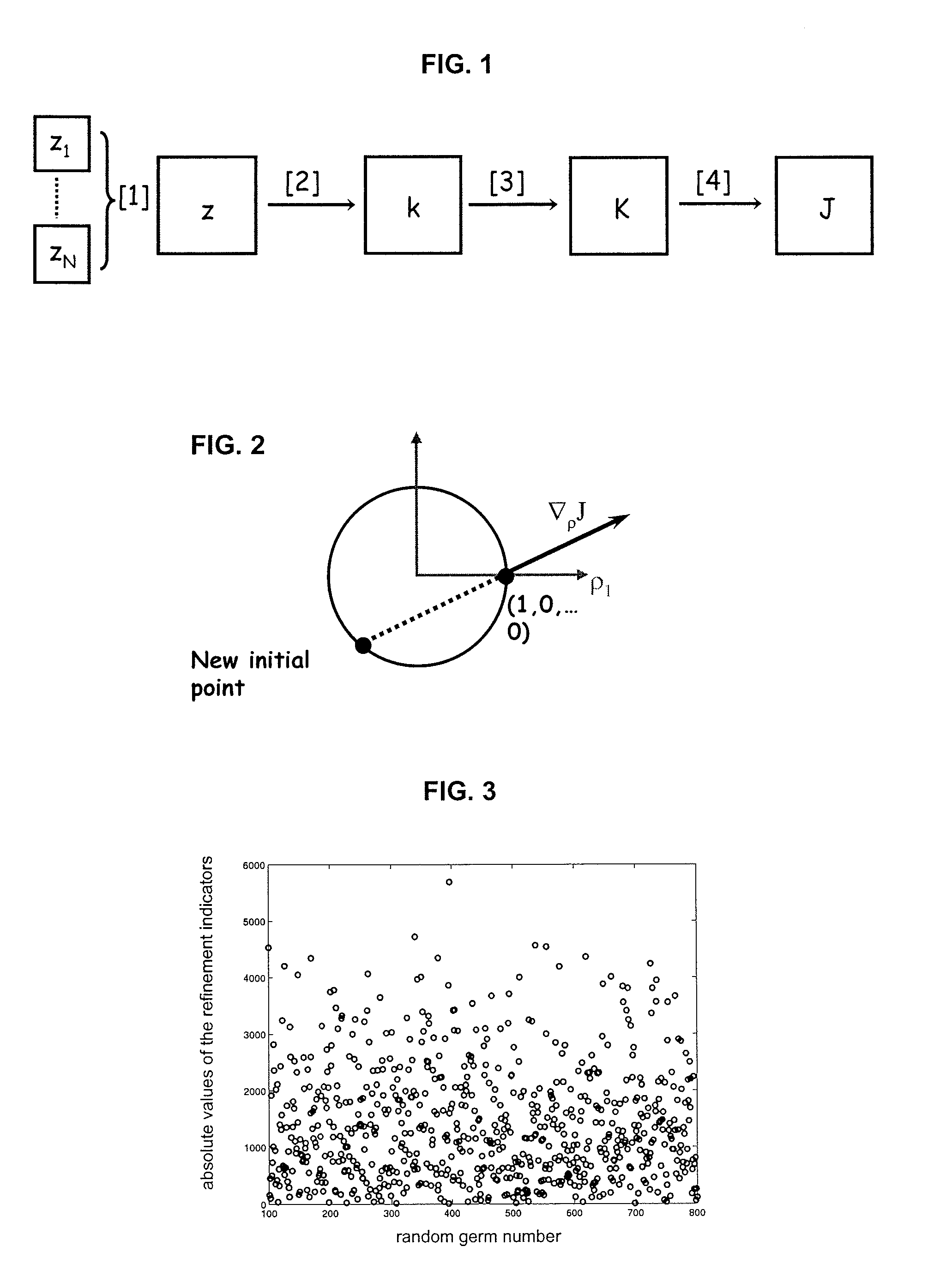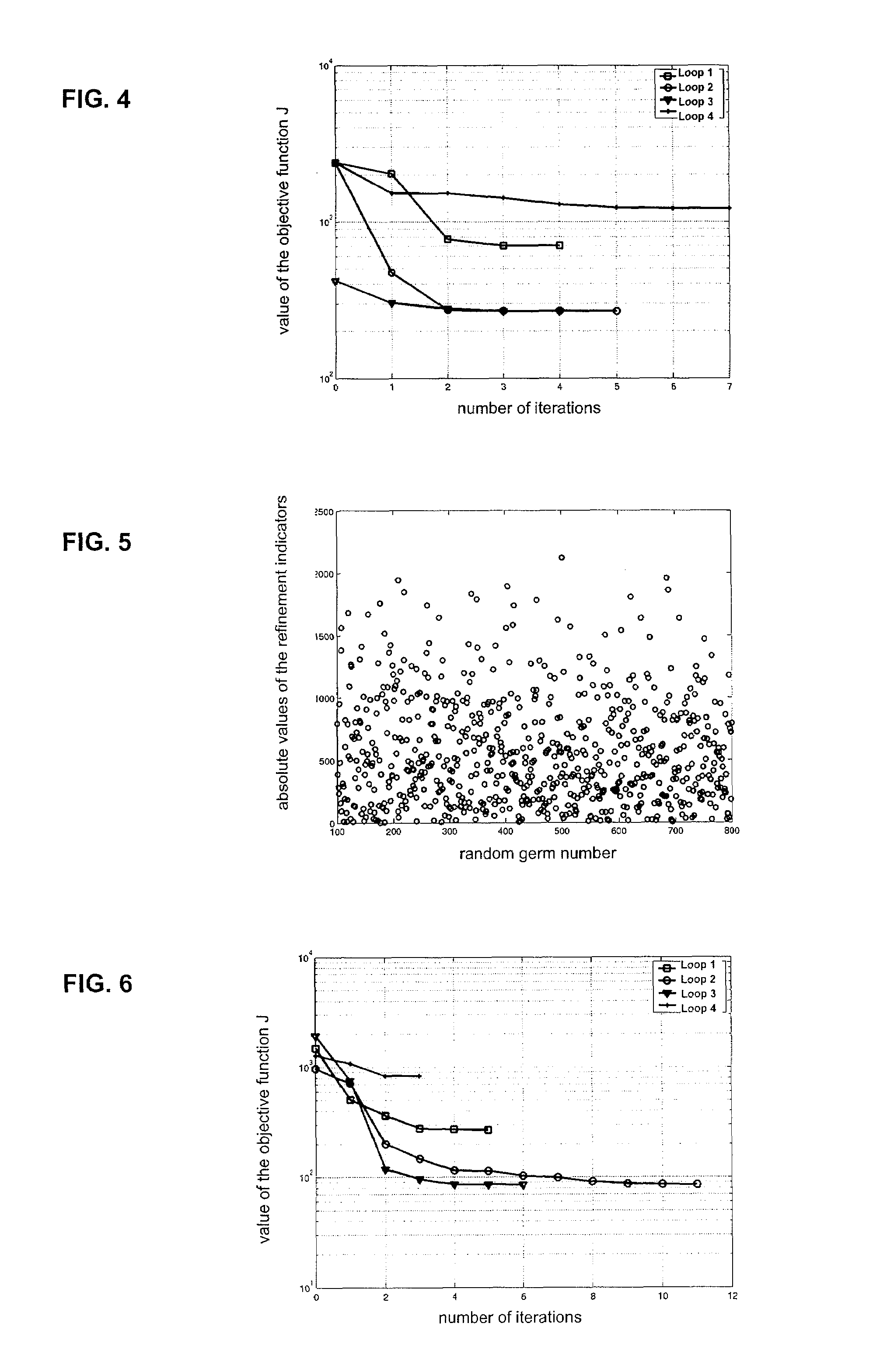Method for quickly forming a stochastic model representative of the distribution of a physical quantity in a heterogeneous medium by suitable selection of geostatistical realizations
a stochastic model and heterogeneous medium technology, applied in the field of rapid forming a stochastic model representative of the distribution of a physical quantity, can solve the problem of the inverse problem associated with this data integration and solve the problem
- Summary
- Abstract
- Description
- Claims
- Application Information
AI Technical Summary
Problems solved by technology
Method used
Image
Examples
case 1
[0048] Random Selection of a Geostatistical Realization z1
[0049]Once the initial realization z1 has been selected, the user chooses the (N−1) realizations z2 . . . zN used in the gradual deformations from among a set of N# (N#>>N) realizations z2 . . . zN#. The idea is to generate realizations z2 . . . zN# from a large number of random terms and to take into account, for the gradual deformation, only the (N−1) realizations having the largest refinement indicators λi that we define now.
[0050]Let ρ=(ρ1, . . . ,ρN#), and consider the constrained optimization problem as follows:
[0051]{Findρ*∈RN#whichminimizes(J)zwithz=∑i=1N#ρiziwiththeconstraints:[A]ρi=bi,i=2…N#,[B]∑i=1N#ρi2=1(3)
where bi, i=2 . . . N# are specified numbers such that Σi=2N# bi22 . . . λ*N#) (multipliers for constraint [A]) and μ* (multiplier for constraint [B]) such that:
[0052]∂L∂ρ(ρ*,λ*,μ*)=0(4)
where L is the Lagrangian defined by:
[0053]{L(ρ,λ,μ)=J(∑i=1N#ρizi)+∑i=2N#(ρi-bi)λi+(∑i=1N#...
case 2
[0062] Avoid Random Selection of Geostatistical Realization z1
[0063]Suppose that the petrophysical properties (such as the permeability or the porosity) of the reservoir model are modelled by a lognormal distribution Y(x) of mean m and of variance σ2. This realization Y(x) is related to a normal distribution U(x) of mean m′ and of variance σ′2 through the relation:
Y(x)=eU(x) (10).
[0064]The gradual deformations use a reduced centered random variable Z(x). Equation 10 can then be rewritten as follows:
Y(x)=e(m′+σ′Z(x)) (11).
[0065]Instead of calculating the geostatistical gradient ∂J / ∂z for a randomly selected realization z1 (case 1), the user evaluates gradient ∂J / ∂z for the zero random variable Z≡0 conditioned to the static well data. The motivation is due to the fact that, if an infinity of realizations was taken into account in the linear combination [Eq. (1)], the resulting realization would be equal to mean em, that is equation (11) with Z≡0. This gradient gives the sensitivi...
PUM
 Login to View More
Login to View More Abstract
Description
Claims
Application Information
 Login to View More
Login to View More - R&D
- Intellectual Property
- Life Sciences
- Materials
- Tech Scout
- Unparalleled Data Quality
- Higher Quality Content
- 60% Fewer Hallucinations
Browse by: Latest US Patents, China's latest patents, Technical Efficacy Thesaurus, Application Domain, Technology Topic, Popular Technical Reports.
© 2025 PatSnap. All rights reserved.Legal|Privacy policy|Modern Slavery Act Transparency Statement|Sitemap|About US| Contact US: help@patsnap.com



